The ancient town of Luang Prabang in northern Laos has to be among the most atmospheric destinations in the region. Strikingly situated on a peninsula formed by the confluence of the Mekong and Nam Khan rivers, Laos’s spiritual capital forms a unique and most enchanting picture postcard increasingly difficult to find in Southeast Asia.
Declared a UNESCO World Heritage site in 1995, the city beautifully blends colonial mansions built by the Europeans in the 19th and 20th century, traditional timber houses, and Theravada Buddhist temples.
With all the charm of a quaint European town mixed with the exotic and woodsy spice of Asia, the popular pastime here is simply lounging in a quiet cafe with a baguette and coffee and watching local life pass by.
The tranquil Nam Khan river is lined with quaint boutique hotels and restaurants where you can just sit for hours and take in the views of the mountain range and kids playing in the water.
Utopia is a bar/cafe offering one of the best spots to relax, read a book and contemplate life…
Strolling the old city streets, you’ll get to marvel at all the glistening temples that dot almost every corners (there are apparently over 33 of them in the city).
This former Royal capital still remains the main centre for Buddhist learning in Laos and is the perfect location for spiritual contemplation. You can hardly take a few steps without catching a glimpse of vivid orange from the monks robes, casually strolling around town.
The most magical moment though, and one no visitors should ever miss, is getting up at the crack of dawn to witness over 200 Buddhist monks walking through town in single file to gather their daily meal.
Luang Prabang is the perfect place to see this most sacred Lao traditions, the Buddhist Alms Giving Ceremony, also called Tak Bat.
A tradition dating back to the 14th century, alms giving today still is very much the same with locals waking early to prepare the food for the monks (usually sticky rice, fruit or simple traditional snacks) and waiting quietly by the roadside to give their gifts.
Young monks in training are differentiated by their yellow or light orange sash around their waist. They can start as early as 10 years old.
This daily ceremony is very peaceful and spiritual and gives you a wonderful opportunity to experience an ancient Lao tradition.
The monks will then retreat to their respective temples and I found it the ideal time to wander around the quiet town (the ceremony usually ends around 6am) while the sun and accompanying stifling heat were still at bay.
Wat Sensoukharam on the main road, also known as Wat Sene, was one of my favorites with deep maroon walls lacquered in gold, and it was right behind my hotel The Apsara.
Wat Nong Sikhounmuang, on quieter Kounxoau Road, has one of the most dazzlingly beautiful colored roofs, in the Thai style.
Wat Xieng Thong (or Temple of the Golden City) is one of the most interesting examples of Buddhist art and architecture in Luang Prabang and one of the most important temples in Laos.
Built around 1560, this temple was used for the the most important Royal ceremonies and houses the bones of King Sisavangvong.
There are a few other beautiful buildings in the temple grounds you can visit.
One of them holds the ornate carved and gilded funeral vehicle of the former king inside.
During the 1960s, the main temple was completely redecorated into the splendor it is today. Both the interior and the exterior walls were covered with black, glossy lacquer and decorated with figures and symbols in gold leaf.
Colored glass mosaics were used to vividly depict scenes from the royal life.
Another sumptuous monastery, Wat Mai, is fairly ‘new’, having been rebuilt in 1821.
The unusually roofed front verandah features detailed golden reliefs depicting scenes from village life, the Ramayana and Buddha’s penultimate birth.
The large and majestic red interior with a multitude of gilded Buddha statues at the altar and the large Buddha provide evidence of the religious, aesthetic and architectural importance of Wat Mai.
Right next to Wat Mai lay the Royal Palace and its Wat Ho Pha Bang (which translates to “Royal temple”).
The soaring, multi-roofed temple was designed to house the Pha Bang Buddha, Laos’ most sacred Buddha image.
Only recently completed (2006), the very ornate structure with extensive glass and gold decorations is a sight to behold.
Locals and monks come to pray to the Buddha image located inside on a shrine.
The Royal Palace sits in the middle of the gardens, perfectly framed by an avenue of tall palm trees. It now houses the National Museum where one can see various royal religions objects, gifts from foreign envoys, cultural artifacts, as well as the former royal family’s decidedly sober residential quarters.
One last temple here is famous more for its location than its looks, sitting atop Mount Phousi smack in the center of town. You’ll have to climb 328 zigzag steps to reach the top and your reward…
The climb is interspersed with small shrines and statues.
Once you reach the summit you get the most amazing 360 panoramic view of the whole town.
Crowds of tourists gather here to watch the sunset, any other time of day the ‘Holy Mountain’ is pretty quiet and you’re likely to have it all to yourself.
Walking down, it’s better to take the stairs at the back as they will lead you directly to the night market now in full swing by the Royal Palace.
The nightly event takes place between 17:00 and 23:00, running along Sisavangvong Road to the town centre.
The hill-tribe traders setup here to sell ethnic handicrafts and trinkets, bed covers, embroidered bags and purses, opium pipes, paper lanterns, silk scarves, jewelry made out of bombs, etc.
Stay tuned for my next blog post on the food of Luang Prabang!!

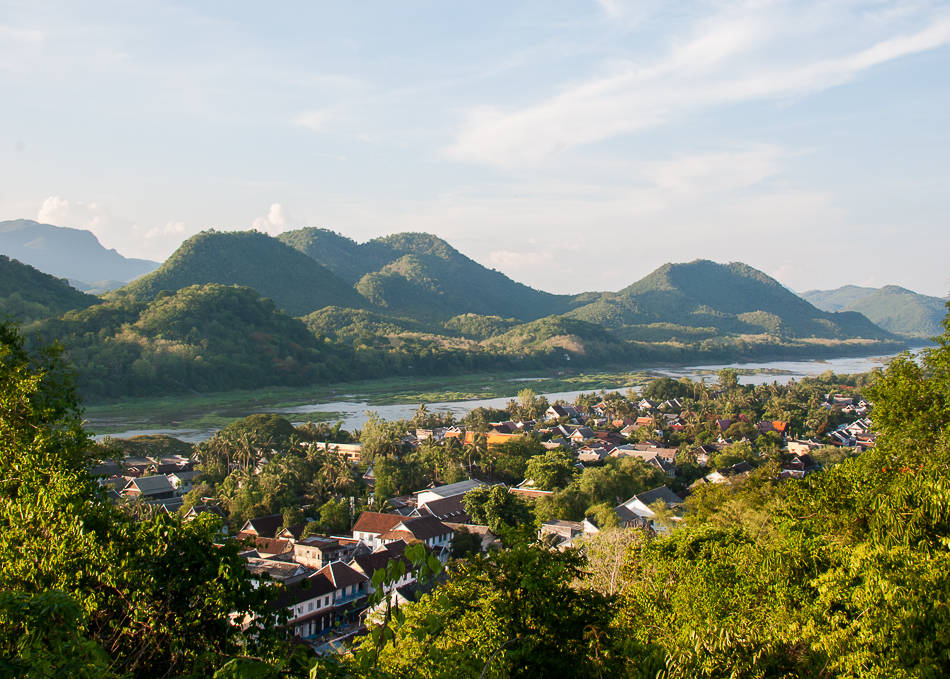
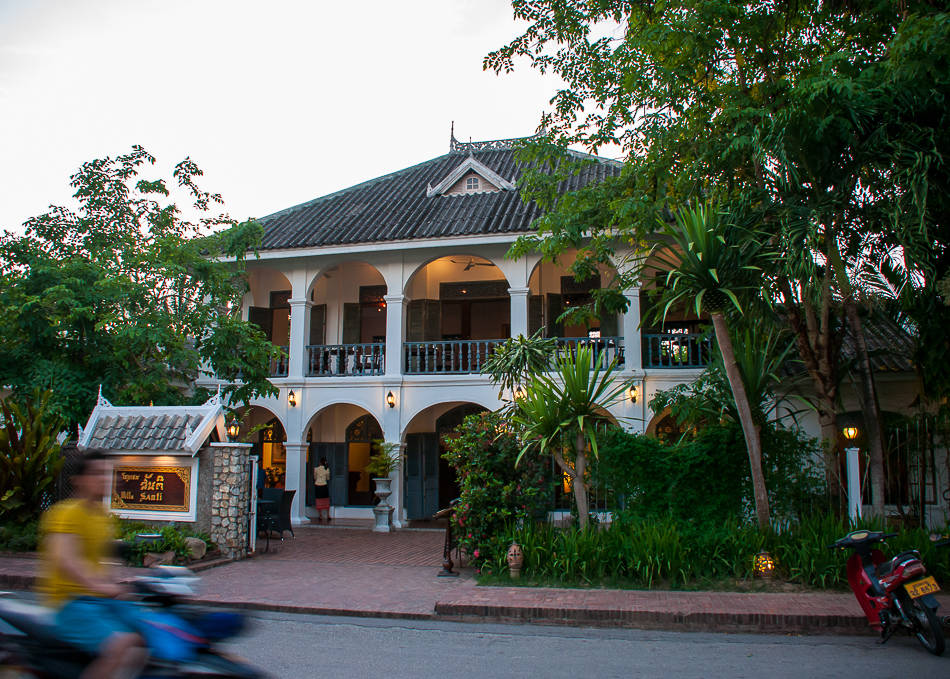
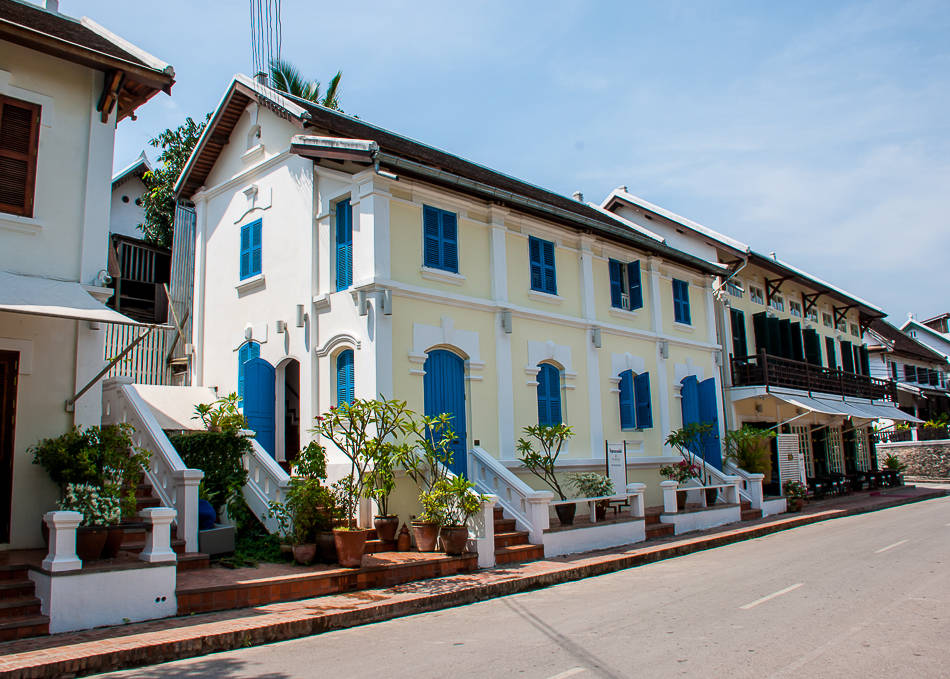
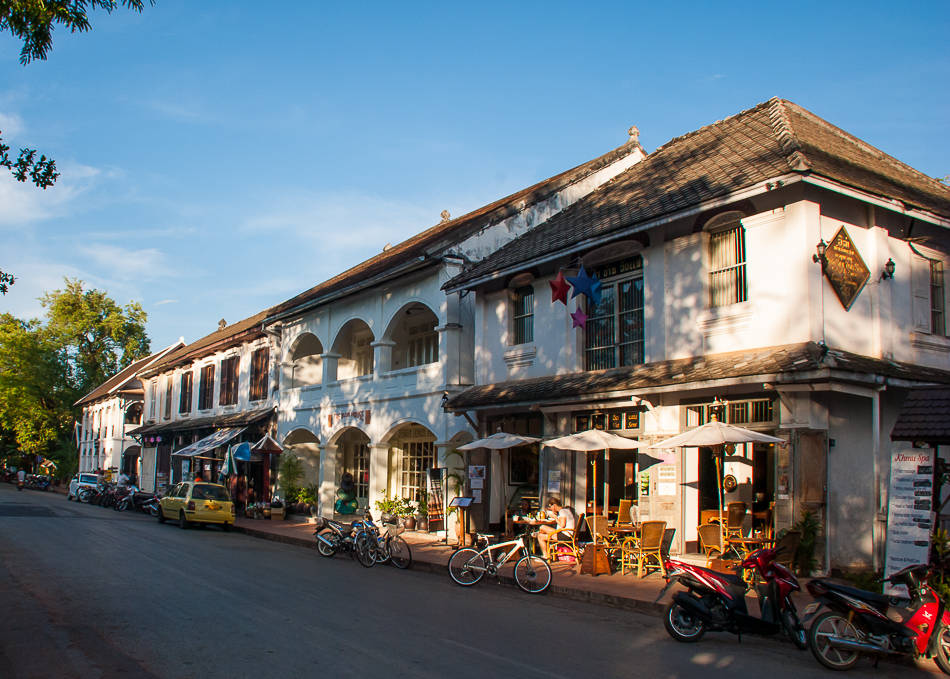
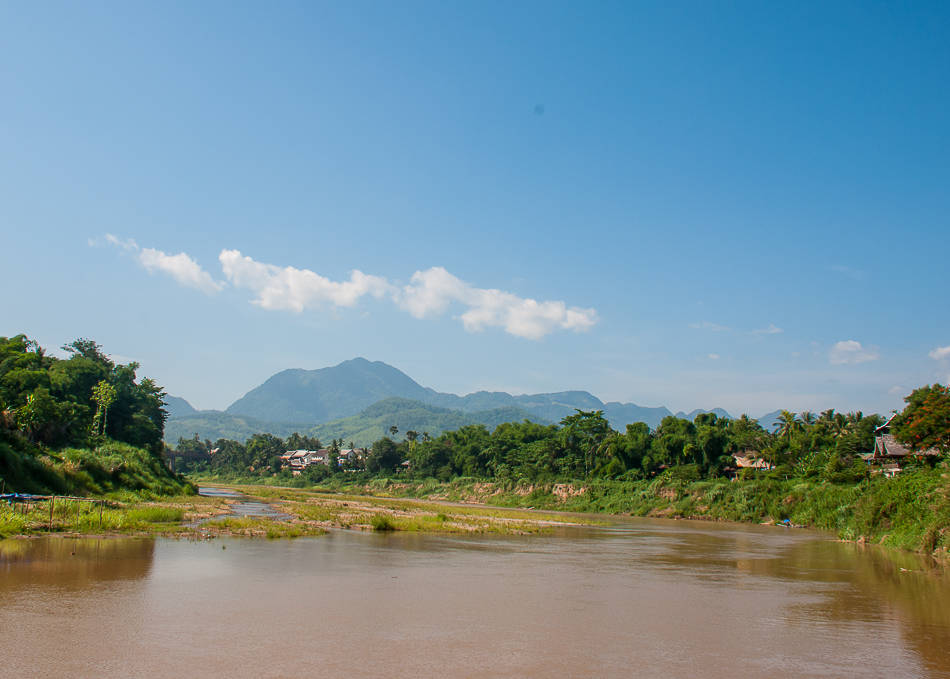

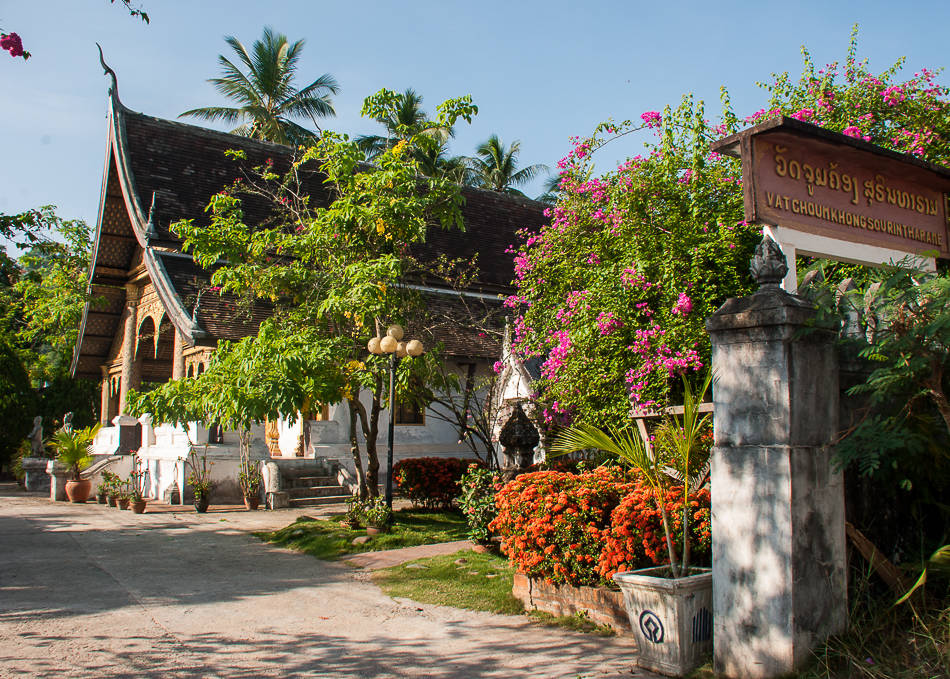
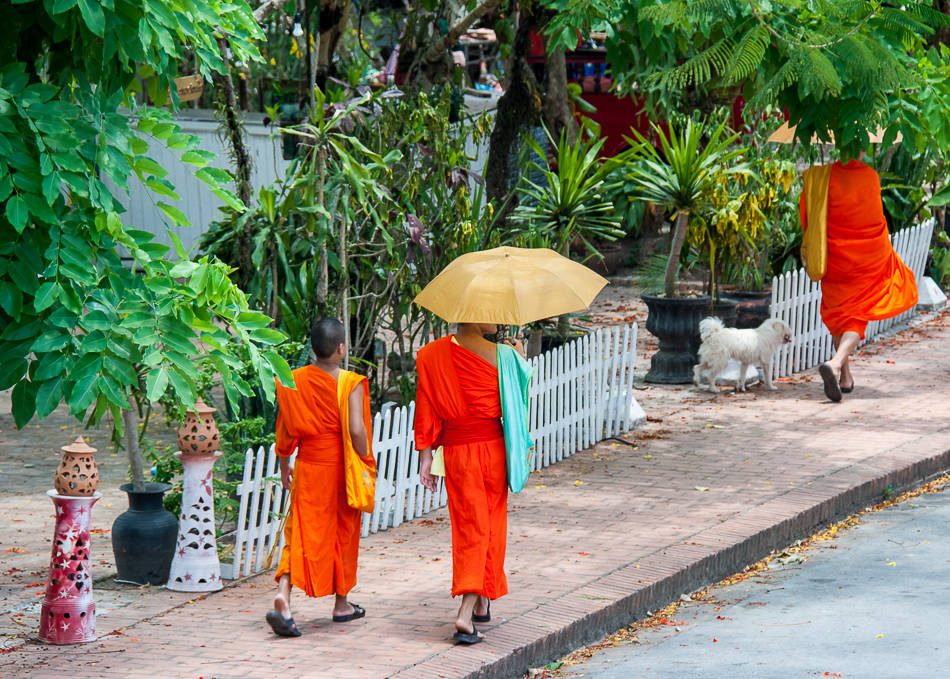
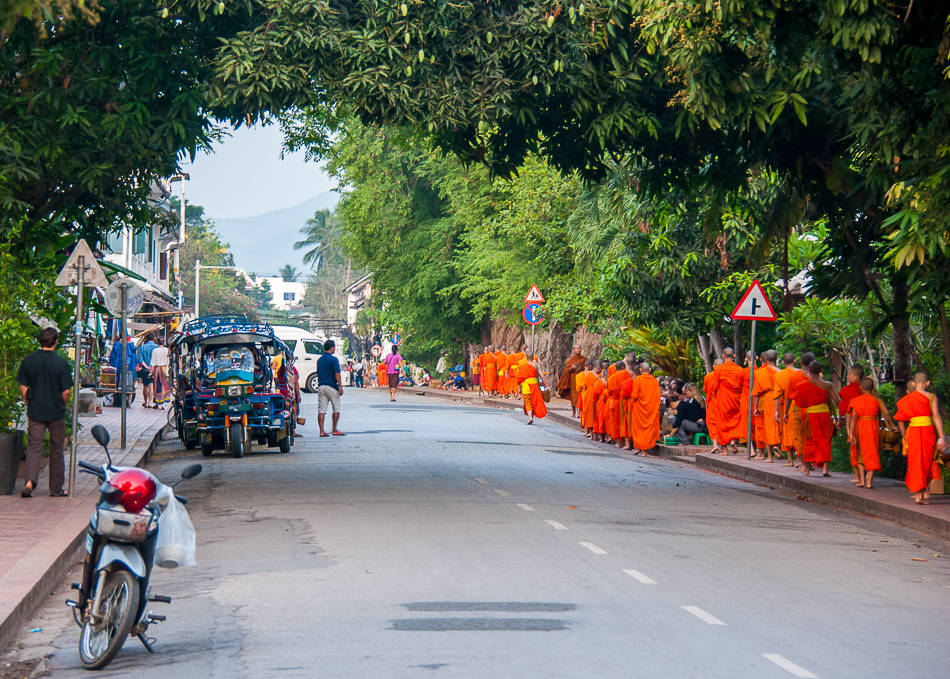
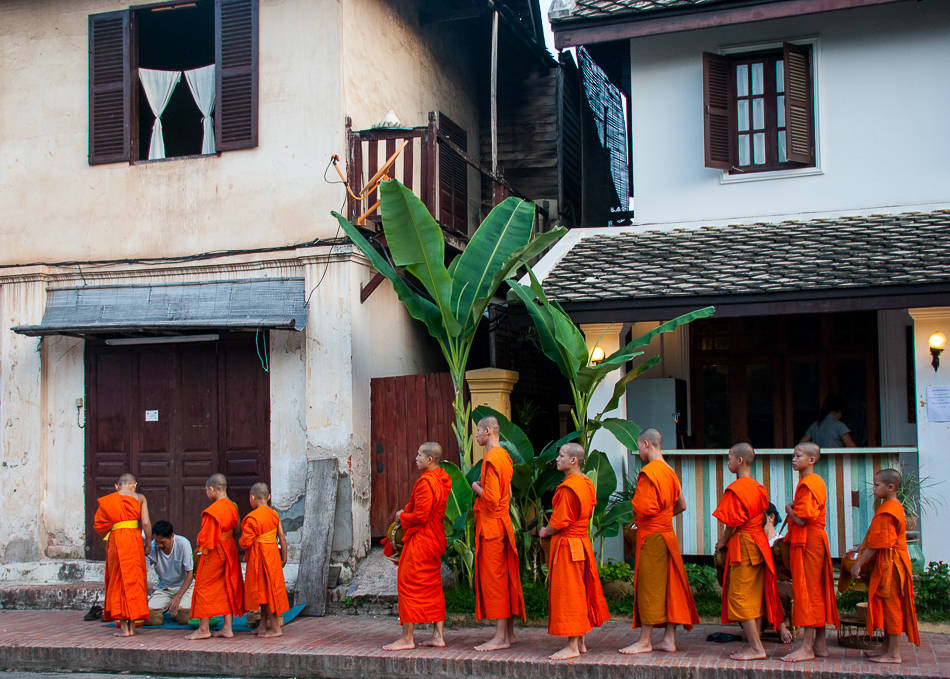

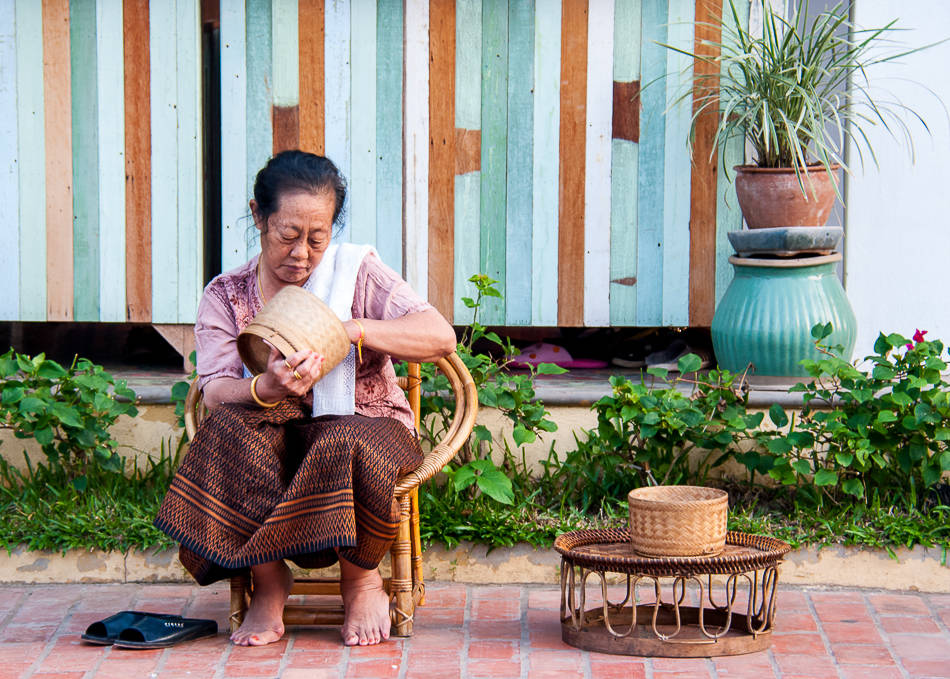
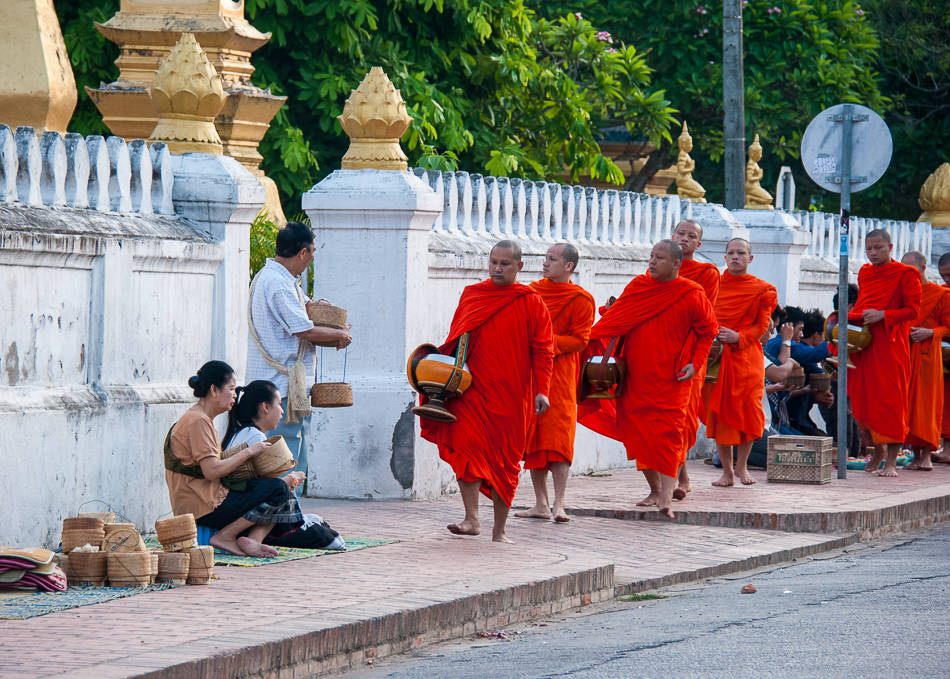
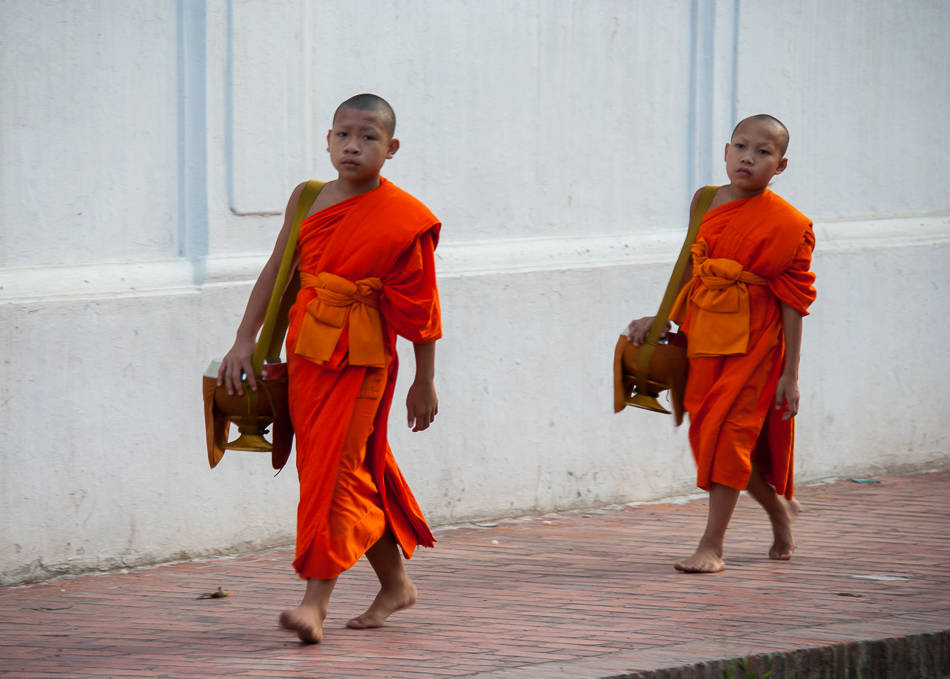
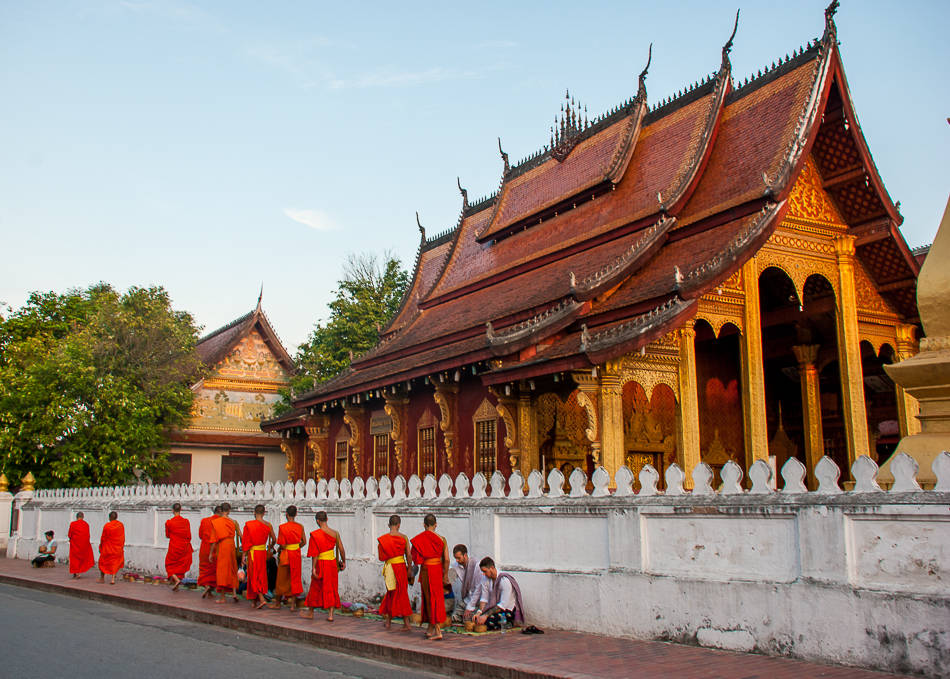
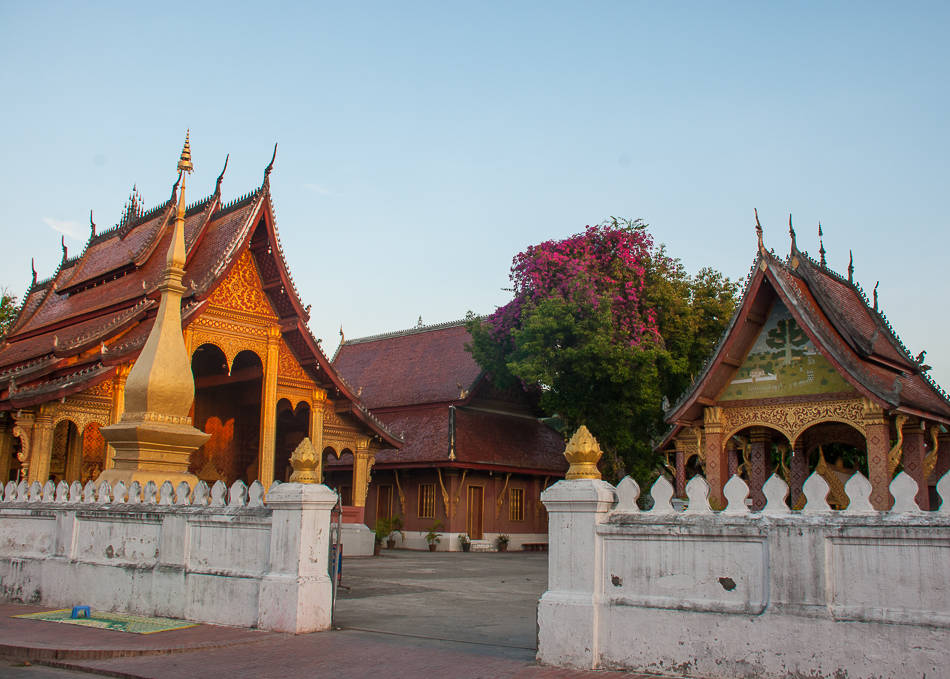
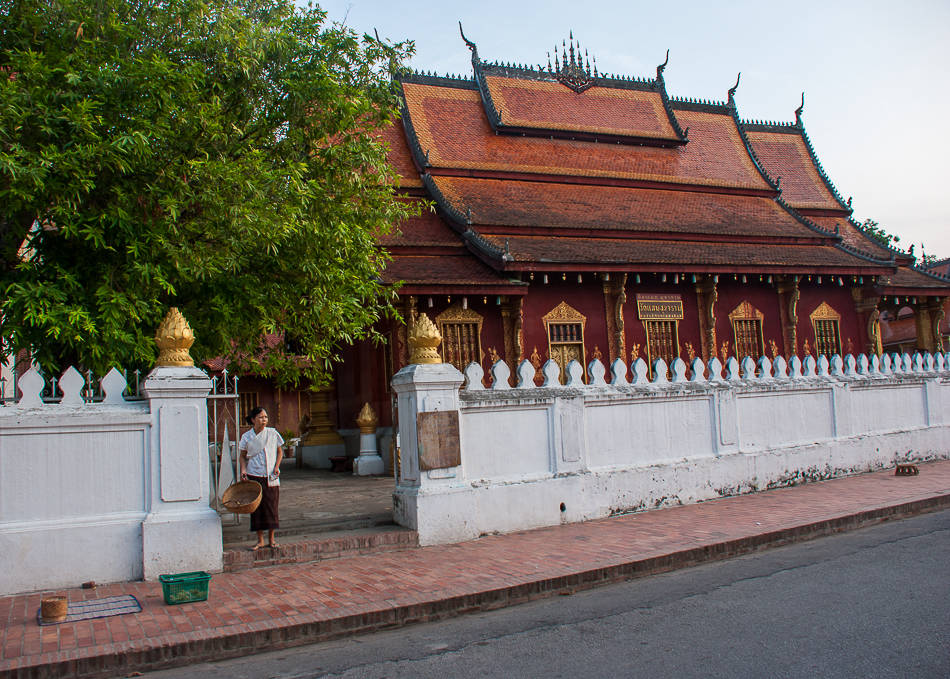

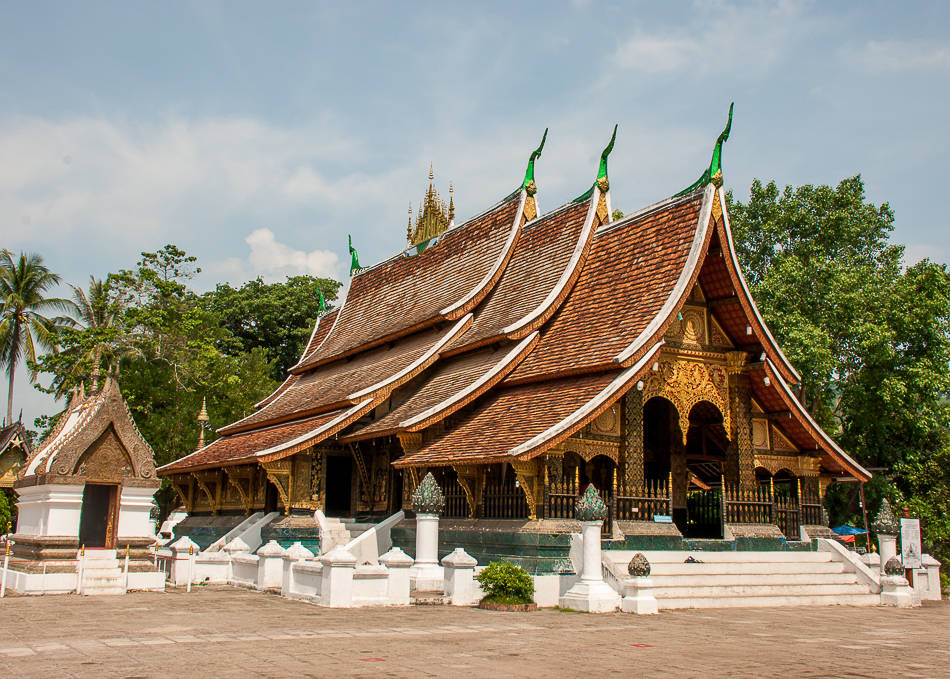
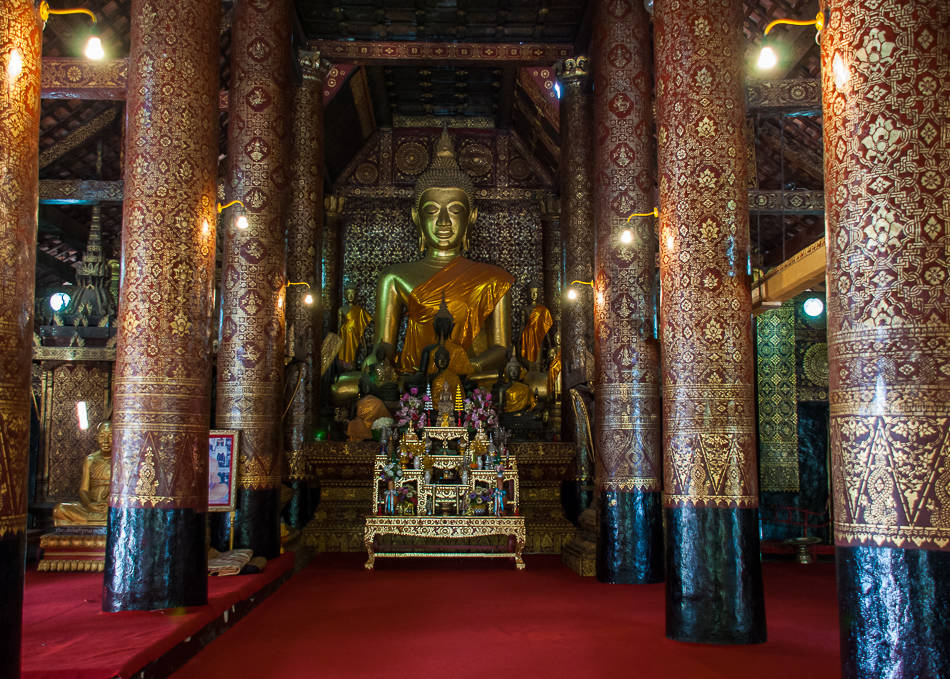
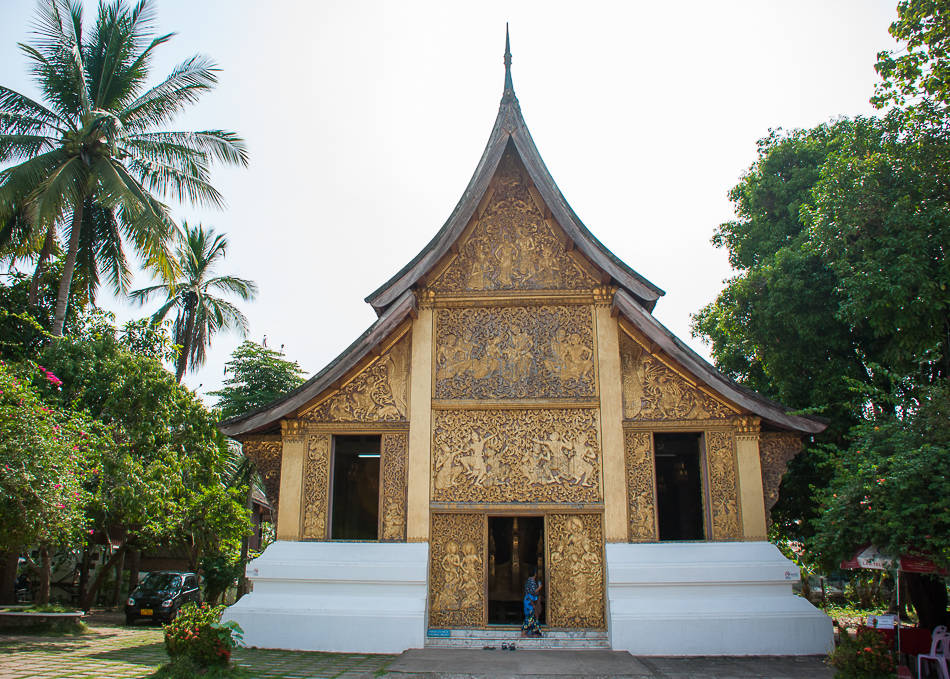
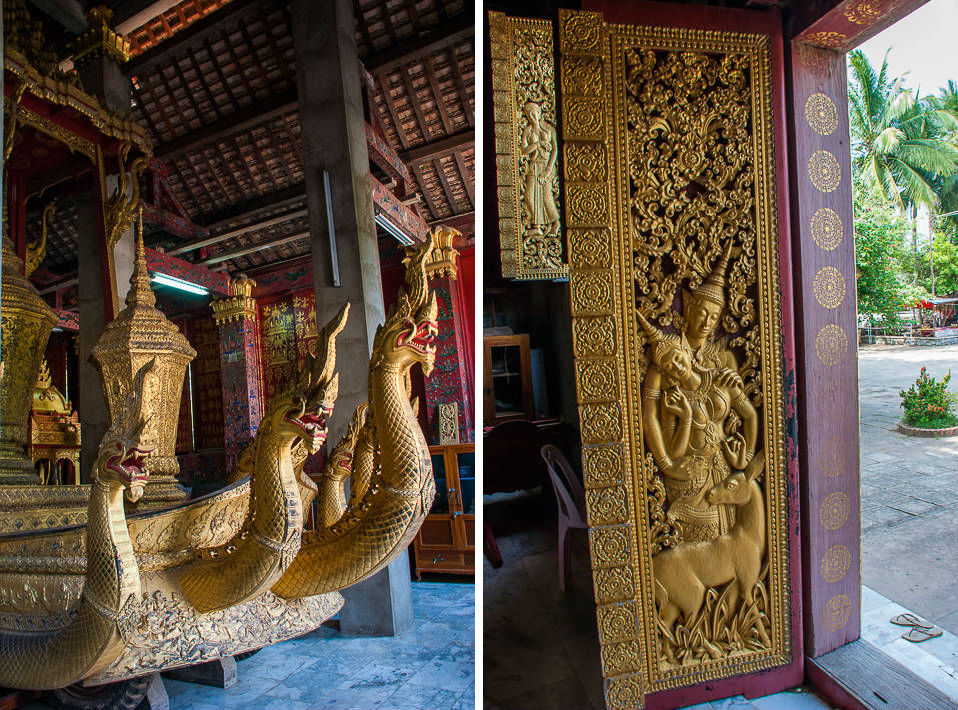
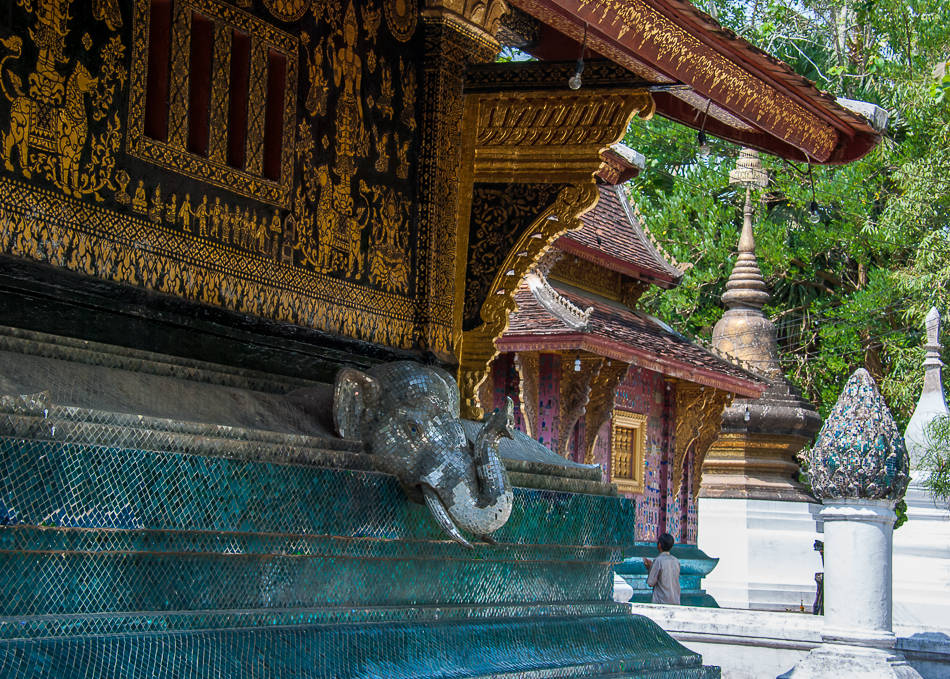

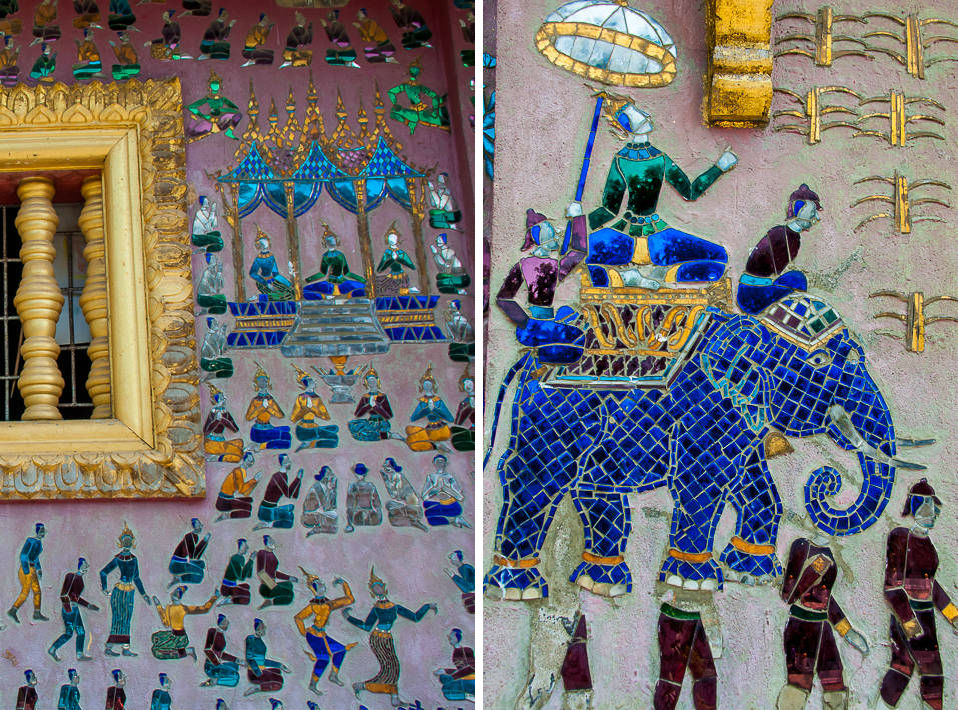
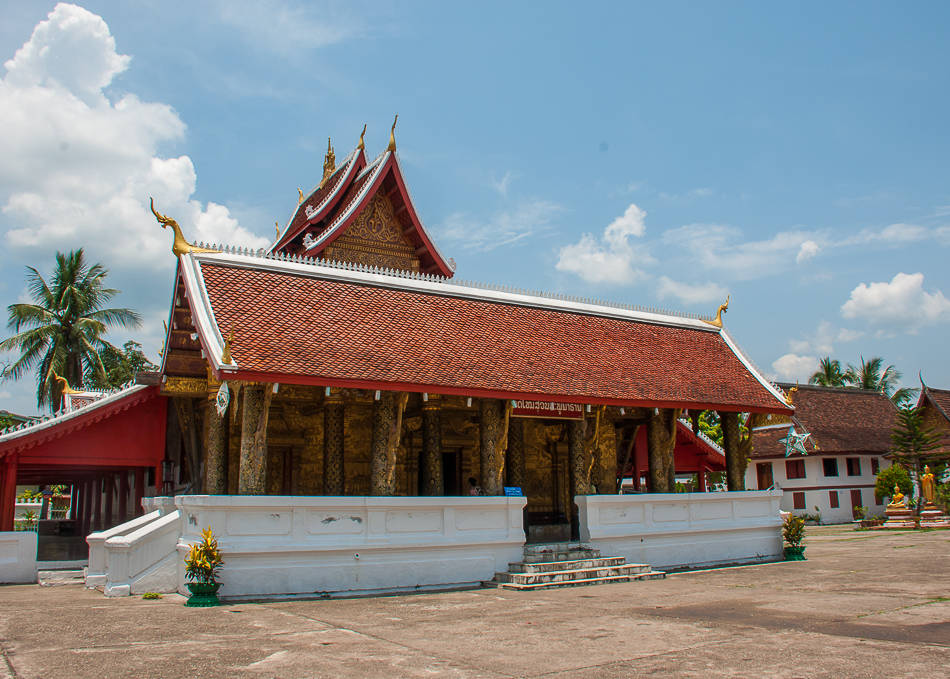
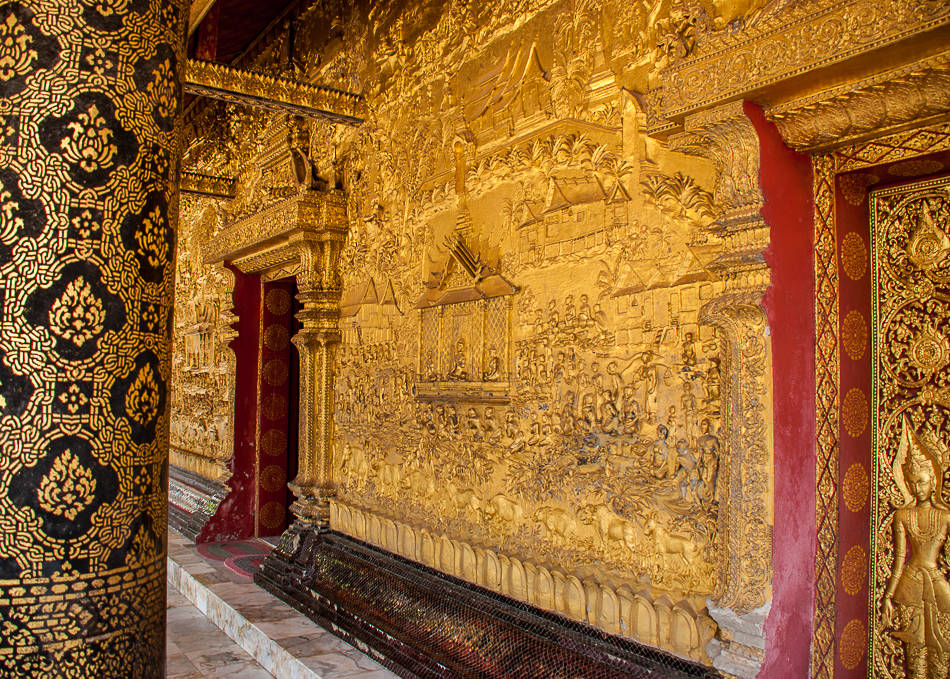
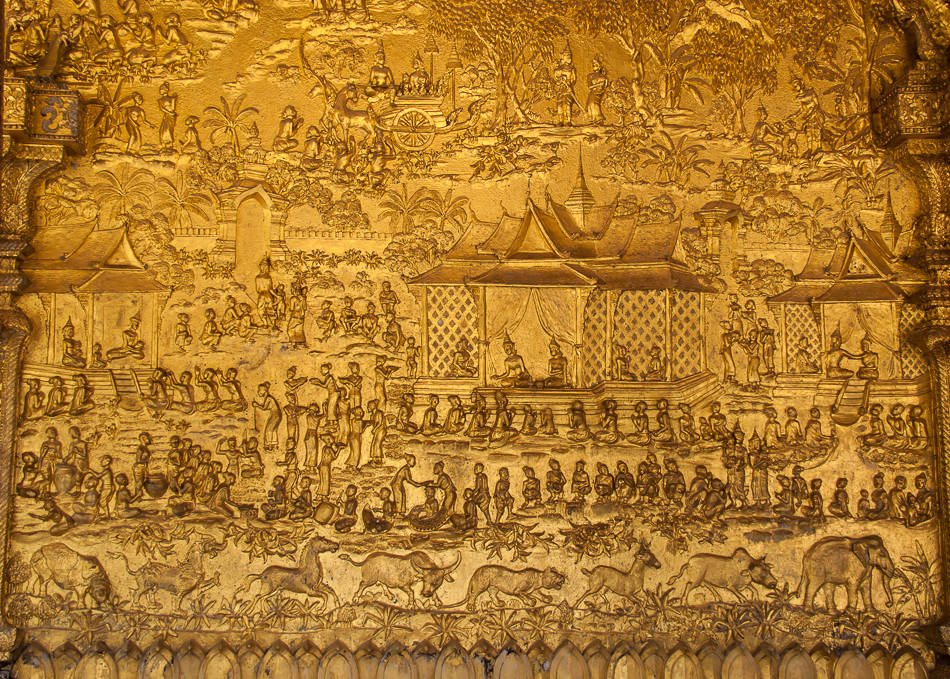
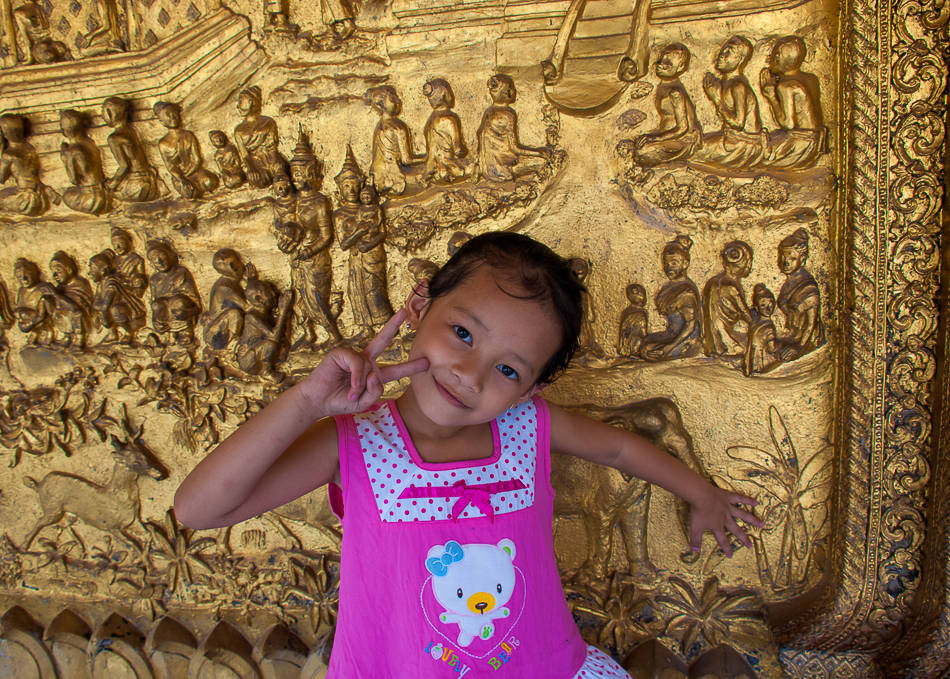
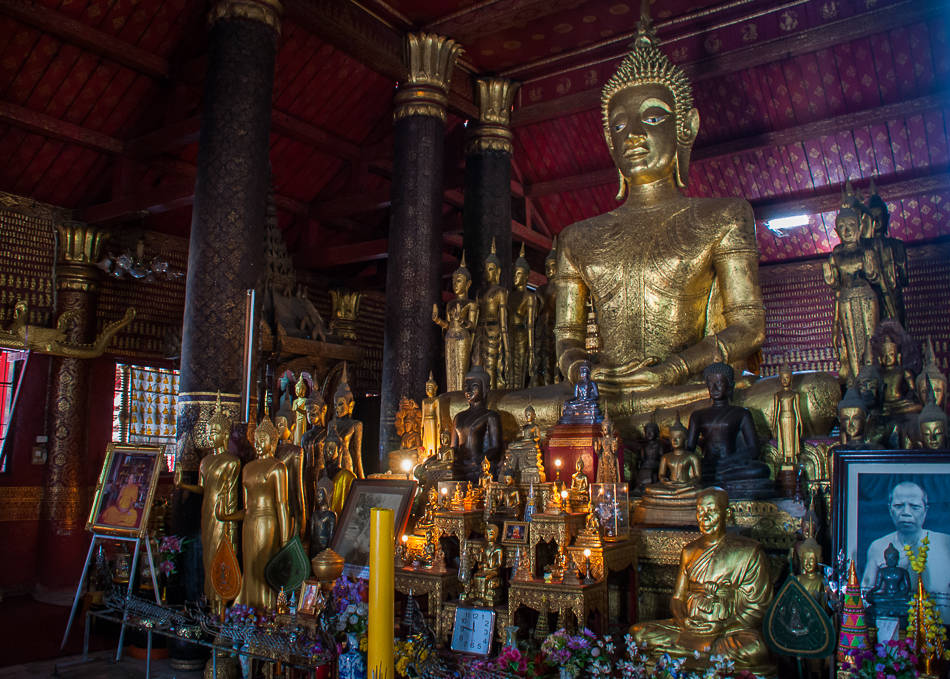
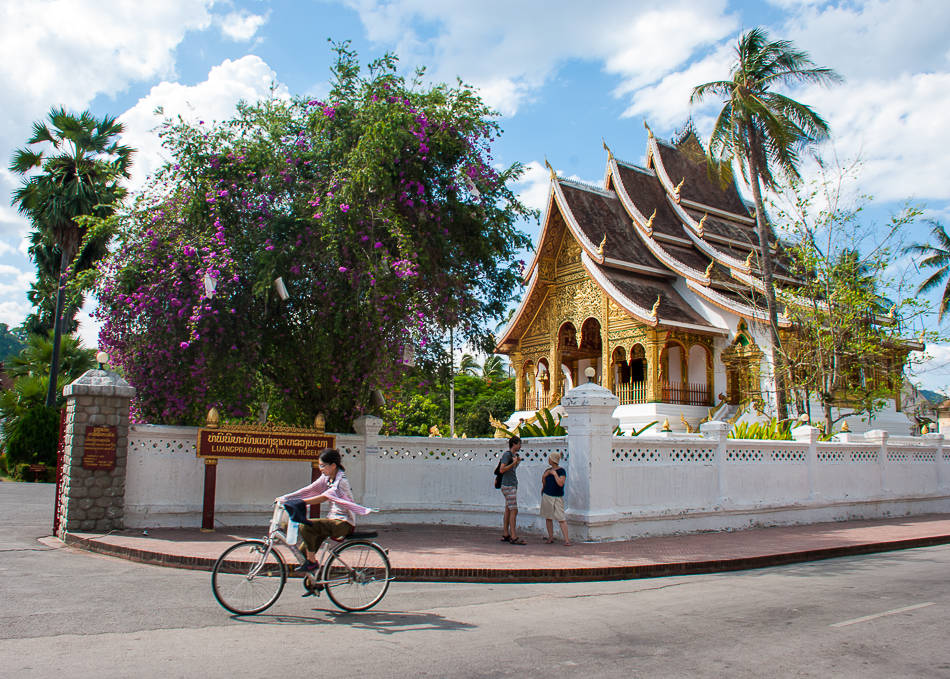


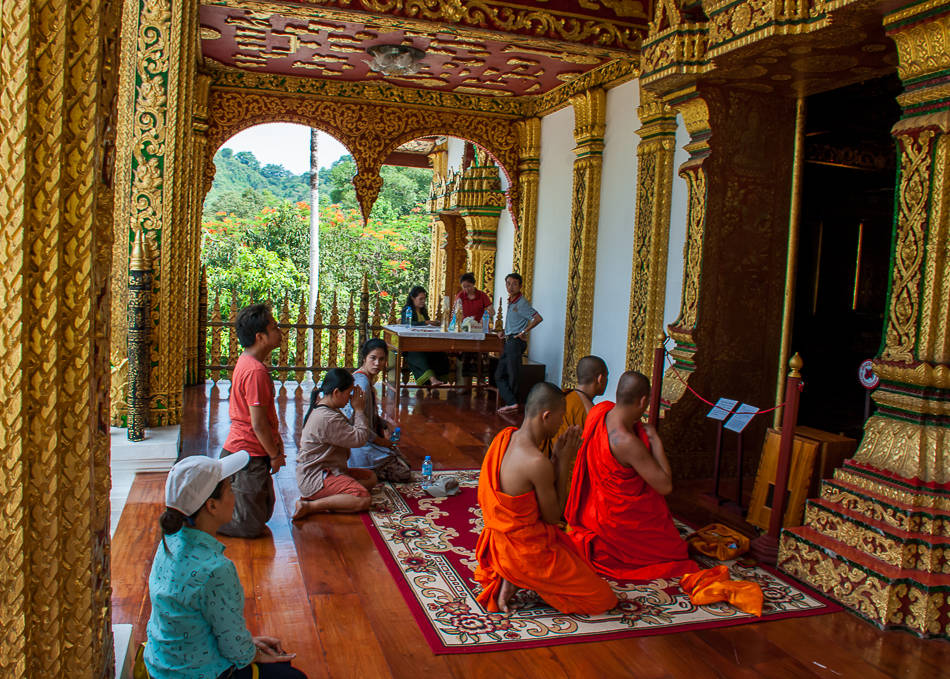
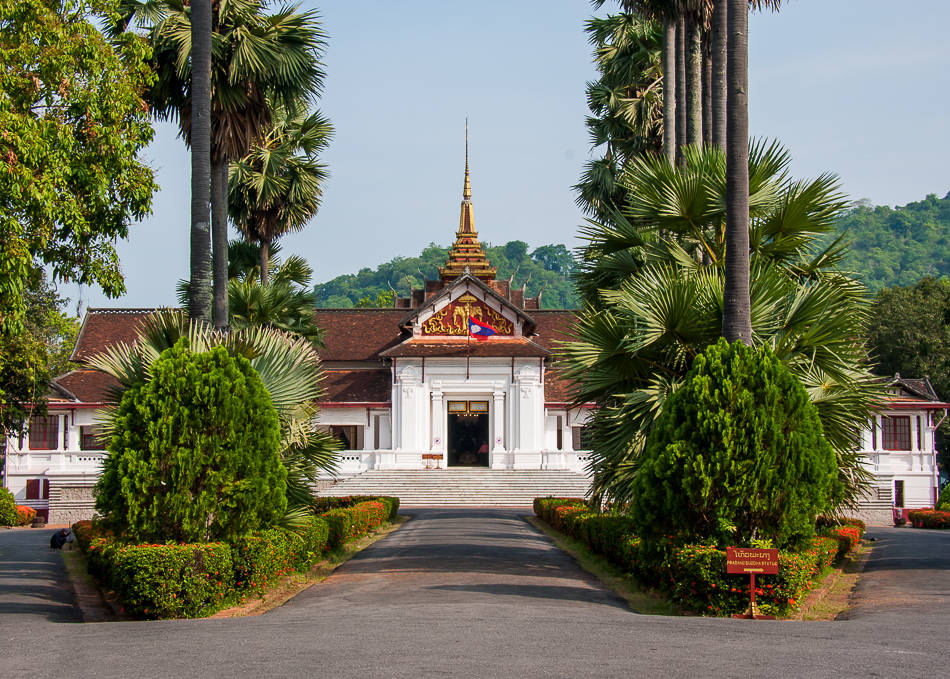
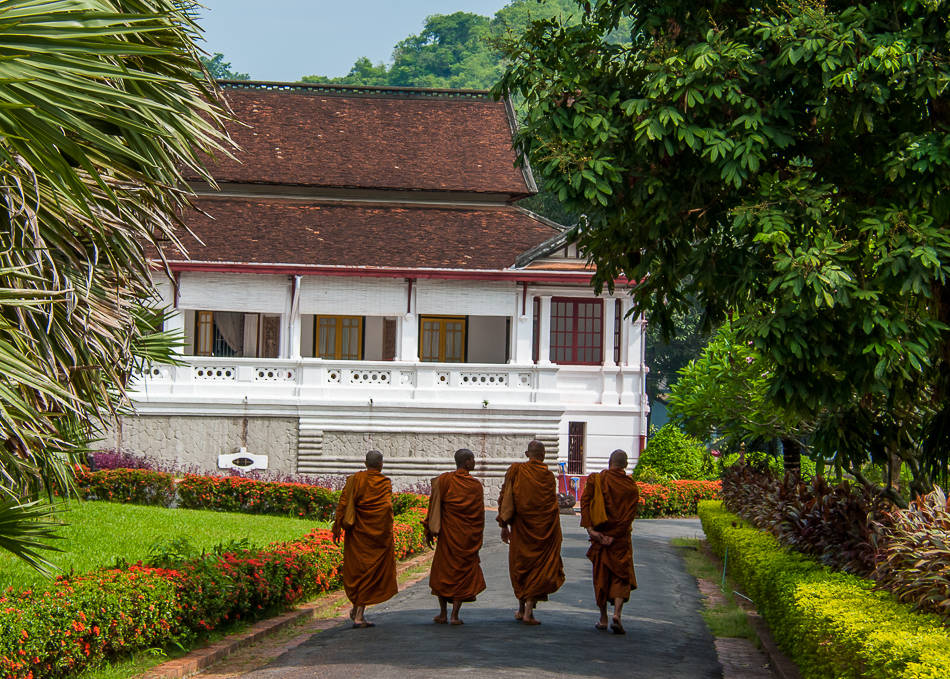
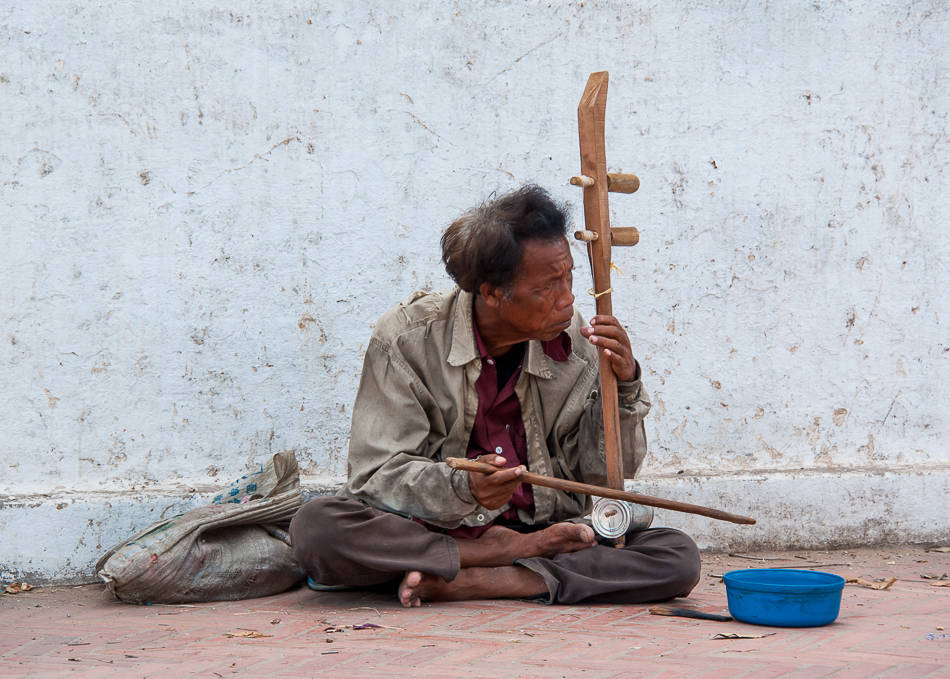

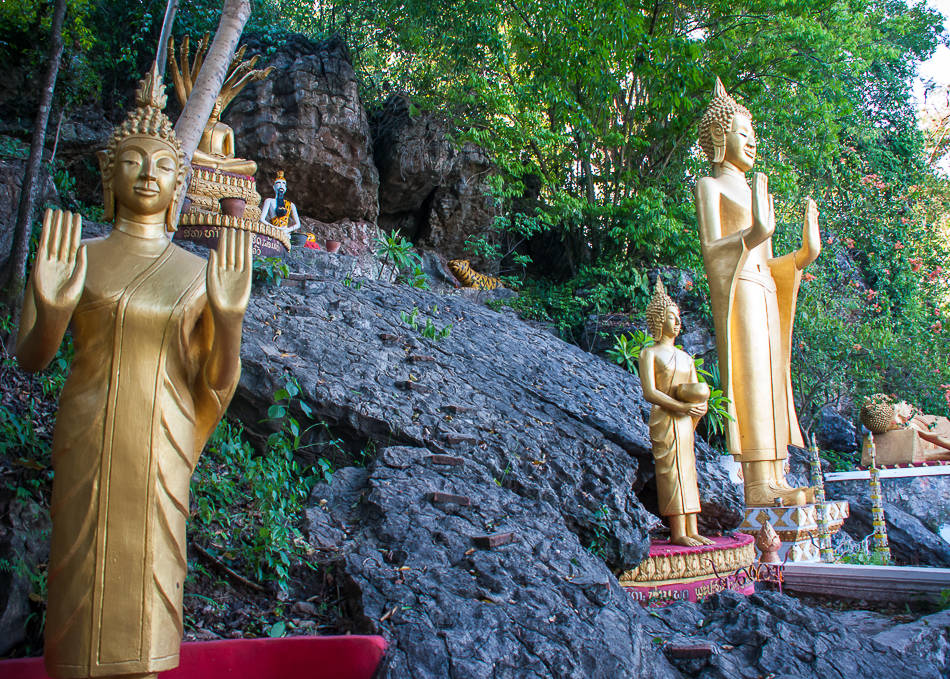
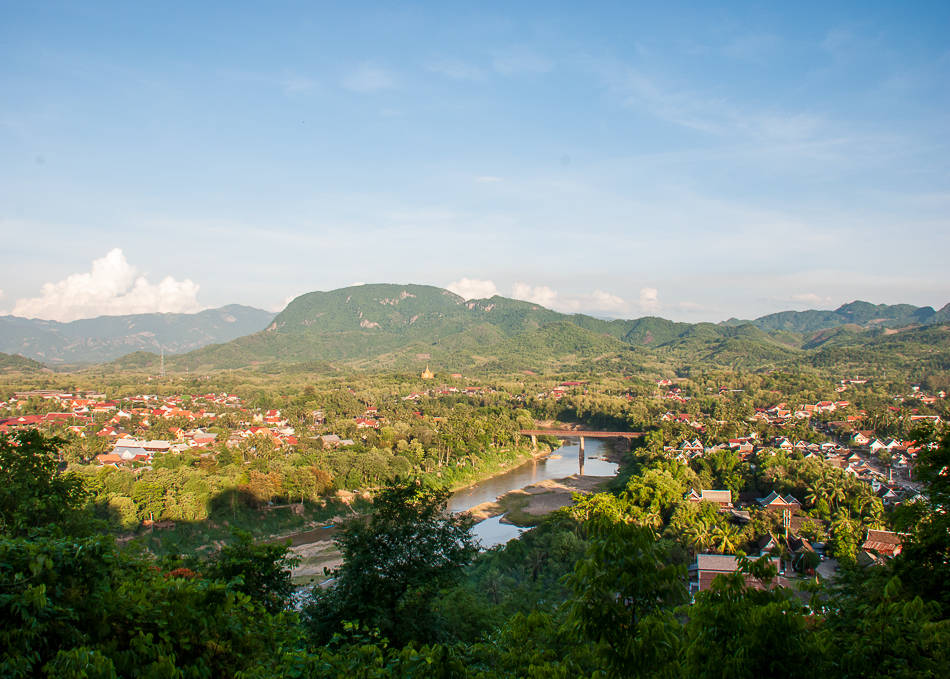
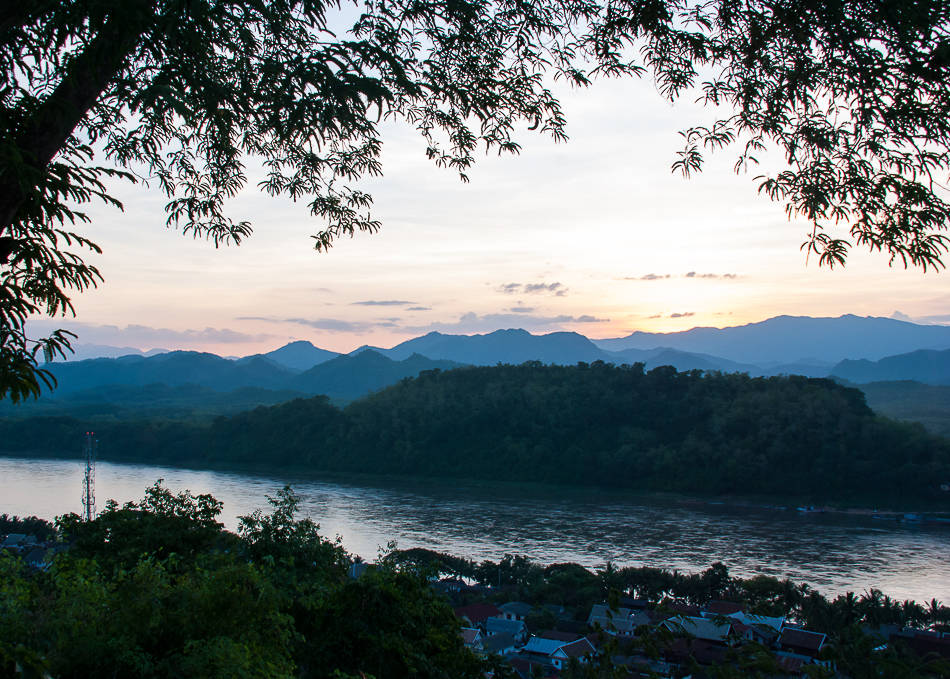
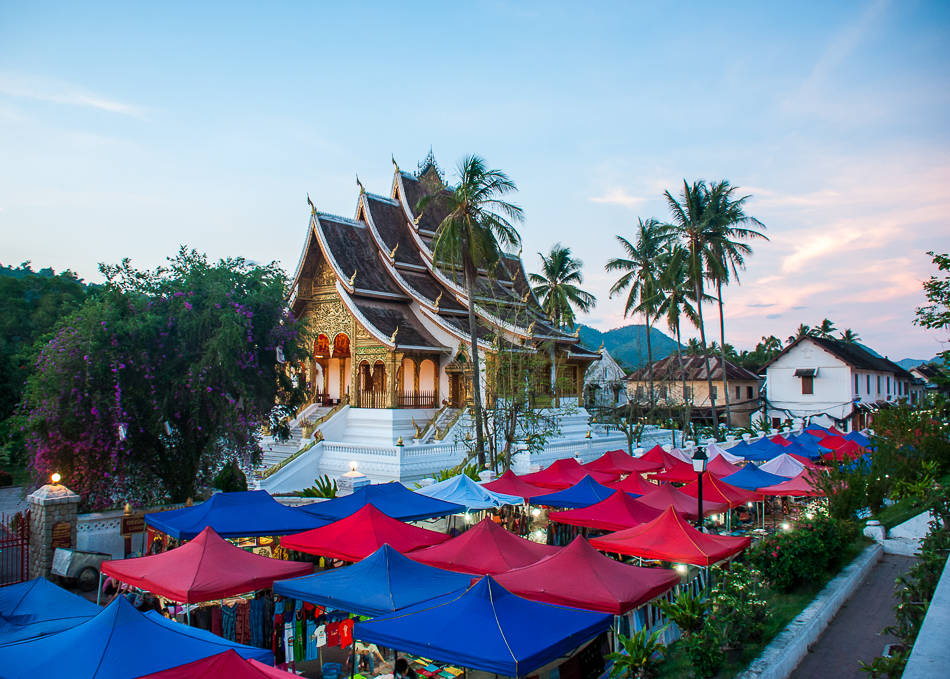

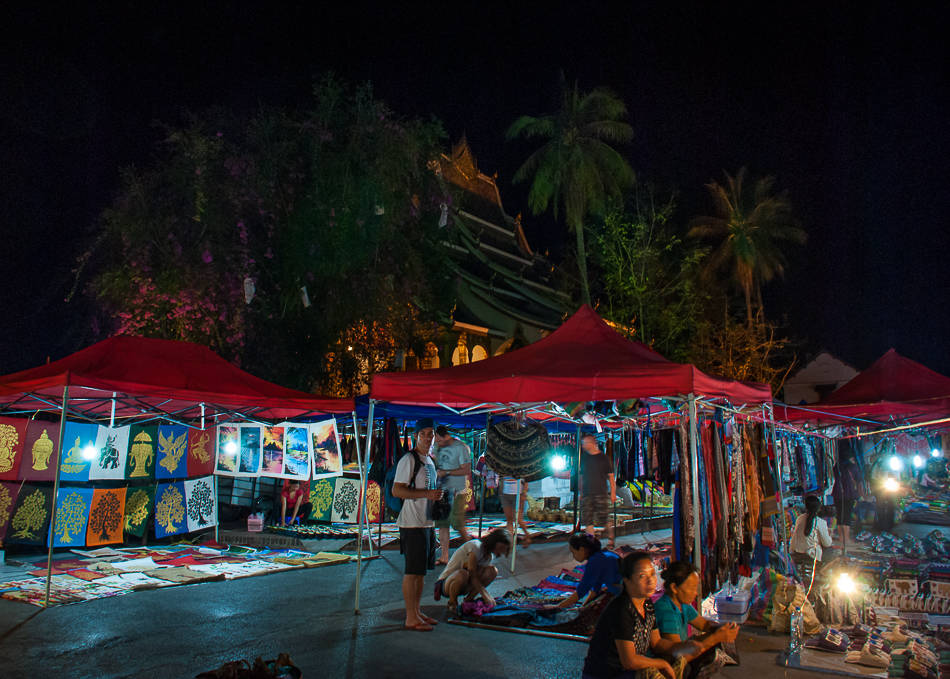
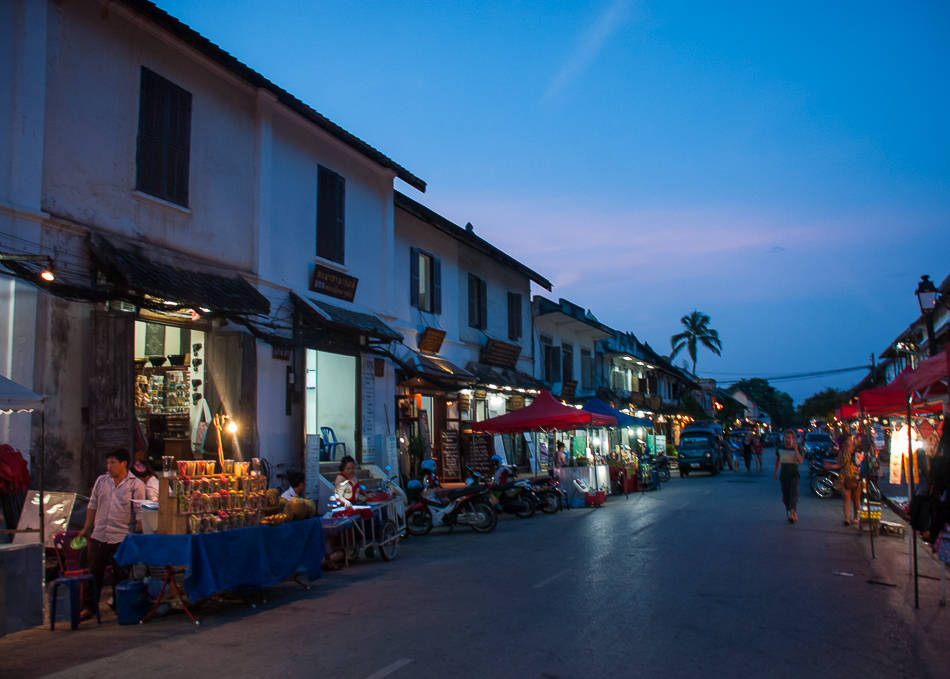
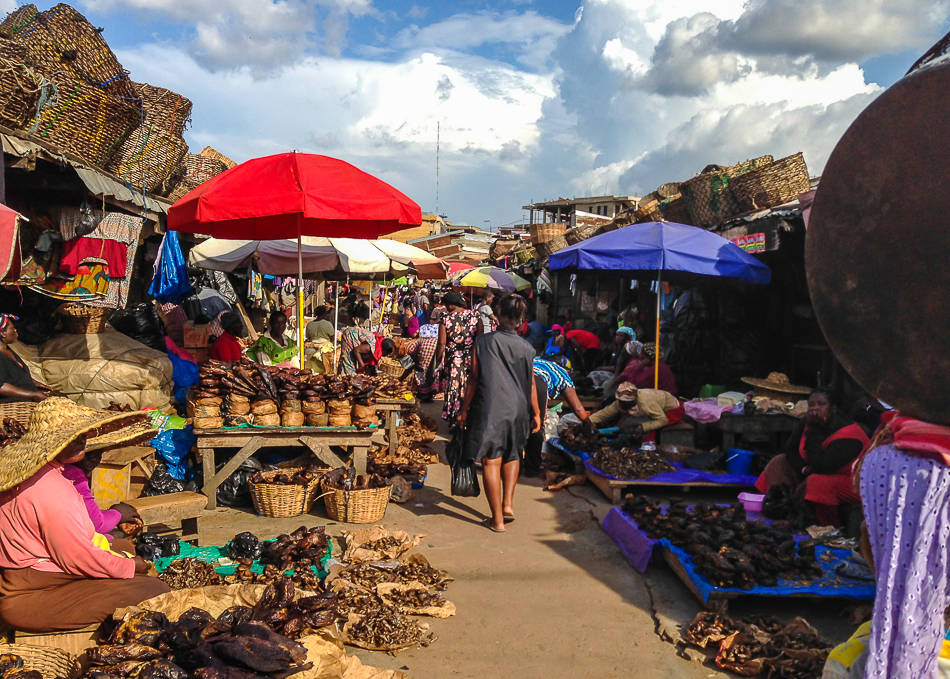
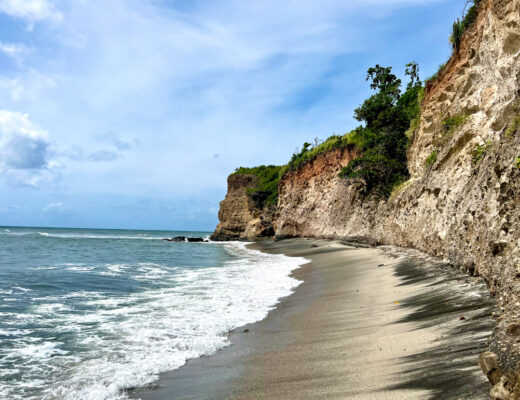
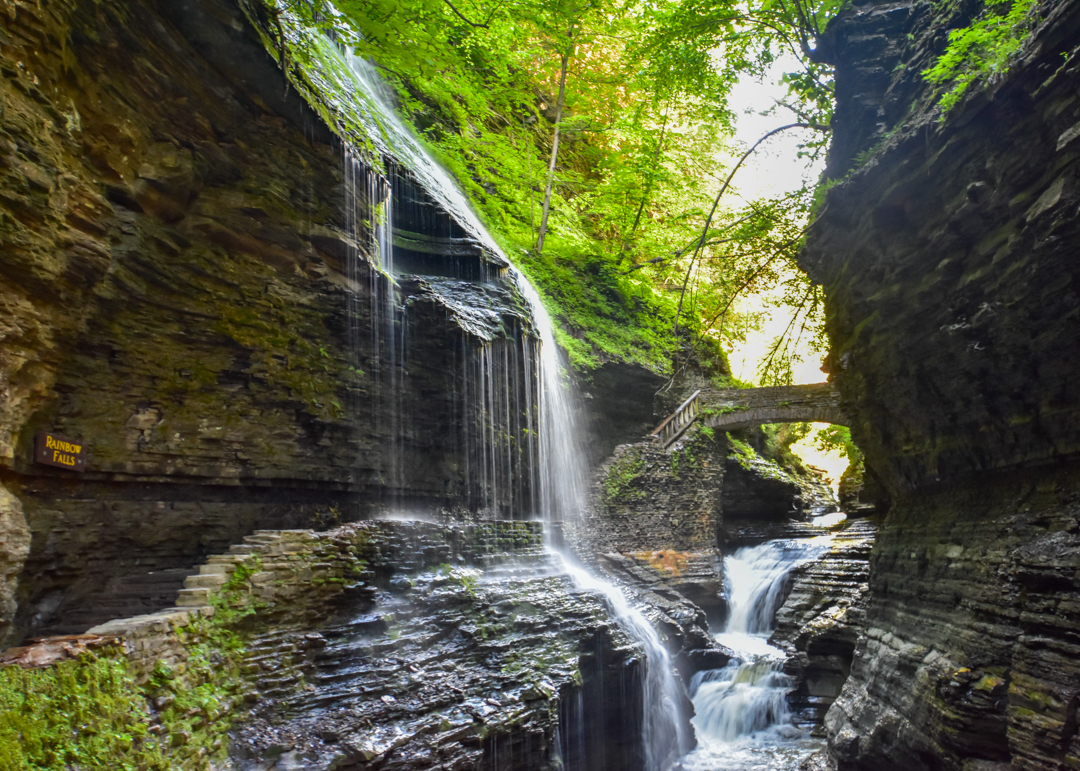


Lovely pictures of one of my favourite towns in the world!
What beautiful photos. I always love Laos